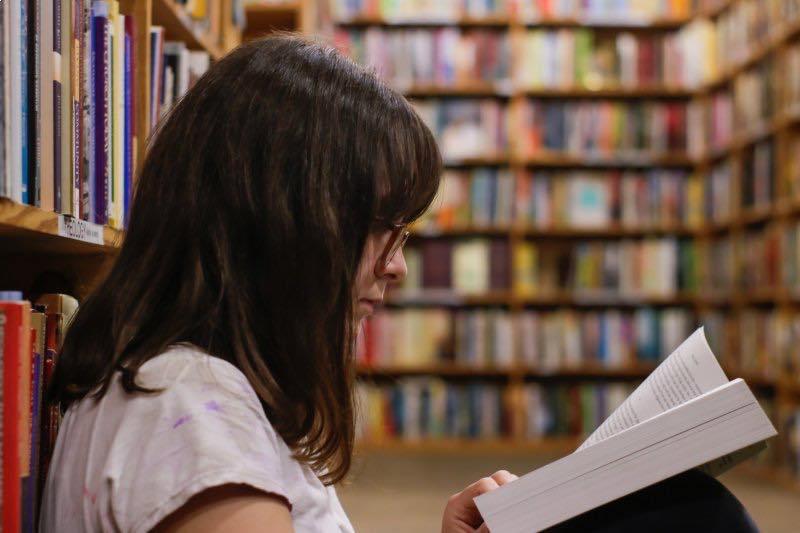Reading comprehension strategies are great for analyzing and dissecting difficult passages, gaining a deeper understanding of the written word, and speeding up your reading skills. Whether you want to improve your own reading skills and speed, or you’re helping your child with their reading comprehension abilities, you’re in the right place.
Here, you’ll find the ten best reading comprehension strategies to up your skills. Each technique has its own advantages and disadvantages, but to properly execute them, tailor each strategy according to your own learning style.
Reading Comprehension Strategies that Up Your Skills
Without further ado, let’s dive into 10 reading comprehension strategies – that actually work!
1. General knowledge
General or previous knowledge is a great way to increase reading comprehension. For example, if you’re a nature whiz and you know a lot about global warming, you can use that knowledge when you encounter a particularly difficult passage regarding the same topic. This strategy helps put difficult concepts into associative perspectives, to help better grasp the concept. It can also be used to learn really difficult words.
2. Ask Lots of Questions
One of the easiest ways to quickly understand a passage is to ask questions. Don’t know what a particular phrase means? Ask someone! There are also three types of questions you can ask: instant questions, analytical questions, and research questions.
Instant questions
Instant questions directly address the passage you’re working with. Trying to figure out what the essence of the passage is trying to convey, figuring out the topics of certain paragraphs, and even asking questions regarding themes and symbols is a great way to comprehend what you’re reading. You can even split questions into facts and opinions to further sort out what the passage is about.
Analytical questions
Analytical questions take on a more critical approach, and involve questions about what the author’s intent is. It focuses on what the author is trying to say through the passage.
Research questions
Research questions happen outside of the text. It involves gathering information outside of the passage you’ve been presented with, and works as a more active learning approach. It allows you to expand your knowledge further than what the text is conveying.
3. Visualization
See the content as you read it. Try and visualize what it is you’re reading, so that you have a firmer grasp on what exactly the passage contains. Is your passage about a clown? Visualize it! This can also be done with educational texts. If your work talks about a mind-map or summary points, visualize what it looks like, or even try and draw it.
4. Summary Points
Summarizing what you’ve read is a great way to gain reading comprehension because it’s a strategy that allows you to develop the concept in a way that’s easy for you to understand. Summarizing is all about condensing the text into bullet points that capture the essence of the passage you’re reading. For each paragraph you read, think of a summary sentence that perfectly describes what that passage is trying to say.
5. Search-Selecting
We’ve all used this strategy at some point. Search-selecting is taking a specific keyword or phrase in the comprehension question, and trying to locate it in the passage. Most people think this is a cheat code to bypass reading the entire passage, but sometimes search-selecting techniques can help you understand the passage through the question. For example, if you don’t understand what the word ‘colour’ means in a text, but you understand the word ‘red’, a question linking the two words together can also link up the two concepts.
6. Monitoring Understanding
This is a reading strategy that tests your comprehension as you read the passage. After every paragraph, you’ll go back and check whether you understand what the paragraph is about. Here, you can note difficult words, key phrases, and even summaries of that passage. It’s definitely more labor intensive than the rest, but it does ensure that you engage with the content in a way that’s beneficial for you.
7. Determining Importance
This strategy works as a sort of hierarchy of content, and is best suited for passages with difficult words and complex concepts or theories. How it works is, you analyze the entire passage while searching for clues or links to content. The more links you find, the higher that concept is on the hierarchy.
8. Prediction
This strategy involves telling the future! When you get to a sentence, try and guess what you think the next bit will be, based on previous paragraphs and previous knowledge of that passage. This tests whether you can link concepts and themes within a paragraph, and can be a really fun activity to liven up a content-heavy passage.
9. Structure
Every passage has a set beginning, middle, and end. Texts in the beginning usually introduce the main idea of the passage, along with some background information that will help guide you when reading the rest of the passage. The middle is always content-heavy, delving into the meat of the passage, and may introduce the concepts and theories linked to the main idea. The end usually summarizes everything. Analyzing the structure of a text is great for understanding the flow of it, and breaks up the text into easy-to-dissect bits of information.
10. Know-Want-Learned
This reading comprehension strategy works as a chart. Separate each word into a different column before you begin analyzing the text. In the first column, jot down what you know about the topic. In the second column, take down questions that you have about the topic, things that you want to know after reading the passage. Lastly, write down everything you’ve learned about the topic, after you’ve read the entire passage. This is great for a discussion setting, because it allows for students to analyze the interpretations of others, and also allows students to share questions and knowledge with one another.
Most Importantly, Find the Reading Comprehension Strategies That Work for You!
Remember that everyone learns differently, and everyone learns at a different pace. Whether you’re improving your own reading comprehension abilities or helping your child improve theirs, you’ll find your own combination of tools and reading comprehension strategies that work best.
Michaiah Juggoo


